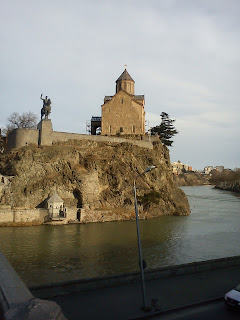Sport&Tourism, back and forth Barcellona 2001
Oldie but
goodie!
During the
weekend I took advantage of the sunny and relaxing days on the Italian Wild
West Riviera, also known as Riviera delle Palme, to read the conference
proceedings of the first Sport&Tourism Conference. Organized by the World Tourism Organization
and the International Olympic Committee in Barcelona in 2001, the conference
was a wrap up of the Barcelona and Sydney Olympic experiences, but there was
much more than that.
For those,
like me, who are more interested in day-to-day relations between sport and
tourism than in world events, the conference proceedings are highly recommendable,
still today. Of course years passed and there won’t be much IT and –let’s say-
mountain biking in there, but the quality of some papers is remarkable, and
some reflections and definitions still topical.
The
executive summary analyses in details the relation between sport and tourism
and defines both sports tourism and tourism sport and the targets of the two
sub-sectors of tourism (and sport!), from top level athletes to spectators. The
different groups are in short presented in their needs and expectations. The
following topics – structure of supply, supply&demand, consumers’
profiling, the tourism product – enrich and leads the general discourse to
engaging conclusions.
Two stroke
me in particular, because 17 years after the conference, when some destinations
are already struggling with a real or perceived threat of sport overtourism,
they sound very up-to-date, and urgent.
I quote
them:
“11. There is a need to encourage
participation of local communities in the planning and
sustainable development of sport events and tourism,
enhancing the local culture and
heritage as well as ensuring social and economic
benefits from them.
12. There is a need to protect the environment in
tourism and sport through better planning,
structuring of demand and facilities, as well as
training and education.”[1]
In many destinations
tourism sport grew almost spontaneously, as a bottom-up process or as
fragmented initiatives of local forerunners who promoted their territories. As
a consequence, these recommendations remained often on paper. Local communities
happen to be hostile to sportsmen who spend on the average less than other
tourists, and are held responsible for the depletion of the natural beauty in a given territory. Sometimes blames without proof, by the way, which yet
doesn’t smooth the local perceptions.
The second point is
also challenging: how many hiking/climbing/mountain biking trails had the
fortune to be planned taking into consideration in advance the environmental
evaluation, the ecological recovering ability and are funded enough to be
regularly monitored?
A couple of challenges
tabled in 2001 and still there. As are the reflections of Peter Keller, whose
chapter ‘Tourism, Sport and the Environment’ sheds the light on issues as the
intensification of tourism and sport-induced pollution and suggests
best-practices.
Definitely worthy to be
read!
[1] WTO/IOC, 1st World Conference,
Barcellona, Spain, 23-23 February 2001, Sport&Tourism, ISBN:92-844-0468-1,
p. 48. Available at https://www.e-unwto.org/doi/book/10.18111/9789284404681
.


Commenti
Posta un commento